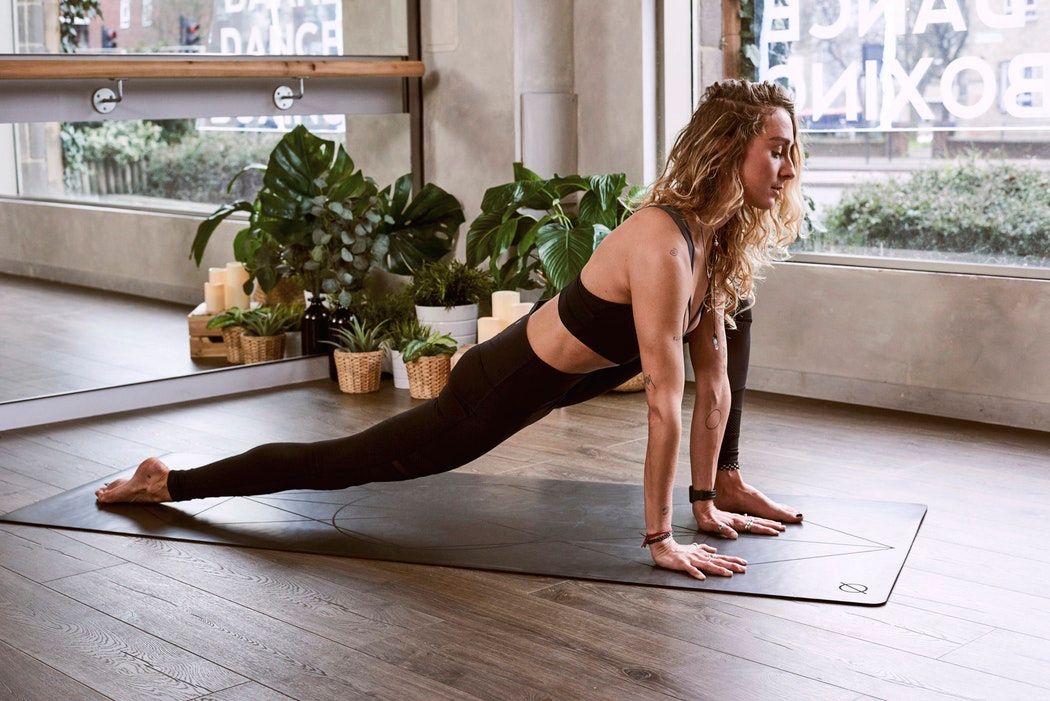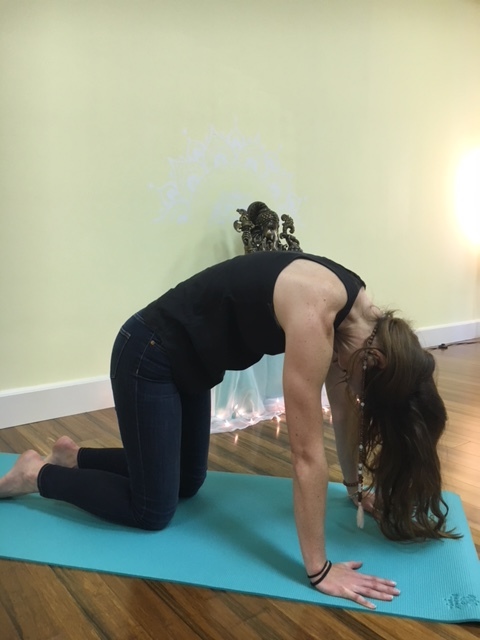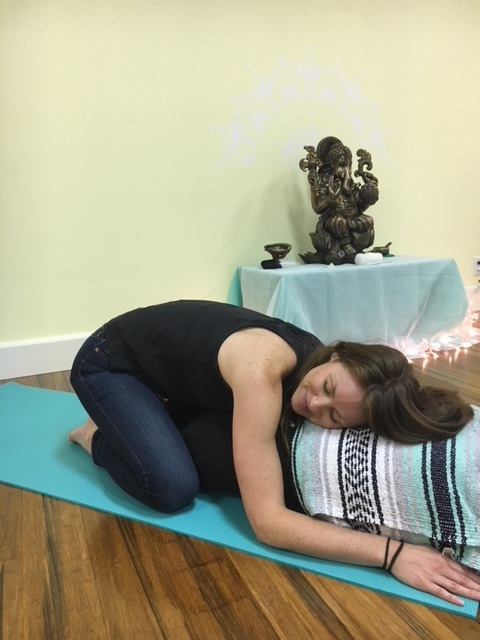Therapist and yoga instructor Kristen Acciari answers common questions about yoga for anxiety and stress, and shares three yoga poses for restoring inner calm!

Can yoga reduce anxiety?
Yes! Many studies have demonstrated the effectiveness of yoga in reducing stress, anxiety, and depression. In one study, women who participated in a three-month yoga program experienced significant improvements in perceived stress, anxiety, and depression. In another study, ten weeks of yoga helped reduce stress and anxiety for participants.
How does yoga help ease anxiety?
Yoga eases symptoms of anxiety and stress through direct benefits to both the body and mind. On a physical level, yoga helps induce a relaxation response and reduce heart rate; on a psychological level, mindfulness promotes a focus on the present moment, guiding thoughts away from anxiety or worry about future events.
Physical benefits of yoga
When an individual is experiencing anxiety, the amygdala, or “alarm center” located in the brain, has gone into a state of hypervigilance or high-alert. The deep breathing practices associated with yoga speak directly to the amygdala to lower the state of arousal. It also activates the parasympathetic nervous system, which induces a relaxation response. Yoga also helps to:
- Lower blood pressure
- Reduce heart rate
- Release muscle tension
- Increase body awareness
- Aid in relaxation
- Decrease cortisol levels
Psychological benefits of yoga
Stress and anxiety often include experiences of racing thoughts, overwhelming mental “checklists” and/or anticipation and worry about future events. Through mindful cuing from your instructor, yoga can help:
- Promote compassionate observation of the dialogue in your head
- Provide space for intentional thought patterns
- Aid in present-moment awareness
- Increase self-connection
Yoga promotes compassionate observations of your inner dialogue
In yoga, we “learn to draw our senses inward, to shut out external stimuli, so that we can really look at what are we thinking, what are we feeling, and what are we doing,” says Nikolai Blinow, a Licensed Mental Health Counselor and yoga teacher in Rhode Island, in her TED Talk on the similarities between mental health treatment and yoga practices.
Blinow continues, “From here we cultivate concentration… and we can focus on just about anything.” She adds that when we can focus, we can explore our thinking, what we’re feeling, and what we’re doing – from a place of non-judgment. Pairing with your mantra of choice can be particularly effective.
Yoga provides space for intentional thought patterns
If you think with intentions, as we often do in yoga practice, you understand how you can change the situation at hand. Intentional thought patterns are the essence of Cognitive Behavioral Therapy (CBT), which involves countering negative thoughts by noticing positive feelings.
“If you change the way you think, you’ll change what you do, and you’ll change the way you feel,” says Blinow.
Yoga is an awesome way to boost your mood and contribute to positive mental health. If you are interested in finding a talk therapist to support you in your overall mental health, you can watch videos and book free initial calls with the right counselor for you on Zencare.
Which type of yoga is best for anxiety?
Classes titled “yoga for anxiety” or “yoga for stress” or restorative classes are especially recommended for reducing anxiety because they are intentionally designed to release tension, increase relaxation, and focus on the present. These classes have the specific needs of individuals experiencing these feelings in mind, and the practice is curated accordingly. For example, the class may include breathing techniques and self-compassion exercises.
If you do not have access to a class with an explicitly-stated focus on helping ease stress and anxiety, classes described as gentle, restorative, or mindful can also be a good fit. When in doubt, reach out to the yoga studio and ask! If you share what you are looking for, studio staff should be able to direct you to the class that best meets your needs.
Yoga is an extremely diverse practice; classes can vary from gentle to challenging, with intentions ranging from relaxation to strength-building. Due to the depth and diversity within yoga, it’s important to choose a class that fits your goals of reducing anxiety and stress.
What yoga poses help anxiety?
Three beginner-friendly yoga poses that help reduce anxiety include:
(1) Legs up the wall pose: This pose reverses the blood flow, increases lymphatic circulation, and nourishes the heart and mind
- Bring your mat over to a wall and lie on your back.
- With your bottom up against the wall, stretch your legs upward toward the sky and rest them against the wall.
- Arms can be out to your sides or hands can rest on your belly.

(2) Cat-cow pose: This pose works with the spine to calm the nervous system and induce a relaxation response.
- Come to your hands and knees, with wrists beneath the shoulders and knees beneath the hips.
- As you inhale, drop the belly toward the floor, raise the tailbone, and bring your shoulders back.
- As you exhale, reverse the movement, sending tailbone toward the earth, rounding the lower then upper back, and releasing the back of the neck so the crown of the head is pointing toward the earth.
- Repeat for 5-8 breaths, linking breath with movement.

(3) Restorative child’s pose: This pose supports the heart and opens up the back body creating a sense of comfort and release.
- Sit back on your heels with knees outstretched to about the width of your mat.
- Bring a bolster, pillow, or folded blanket to touch the inside of both knees, positioned vertically out in front of you.
- Stretch your arms overhead and fold forward over your bolster, allowing your torso to rest on your prop. If using pillows or blankets, you may need 2 or more for a comfortable height. Your head can be turned to one side. Rest your hands on either side of your bolster or prop, with elbows pointing outward to relax the shoulder blades.
- Breathe into the back body.

Where can I find yoga classes for anxiety?
Most yoga studios offer restorative yoga classes, and an increasing number of mental health centers are offering yoga for anxiety and stress as well. The immense benefits of yoga for mental and emotional wellness are well-documented, and centers that offer traditional talk therapy are starting to incorporate body-based services like yoga into their service offerings. Finding a class in a setting like this can be a great way to ensure the environment of the class is sensitive to your needs and experiences.
Happy yoga-ing!